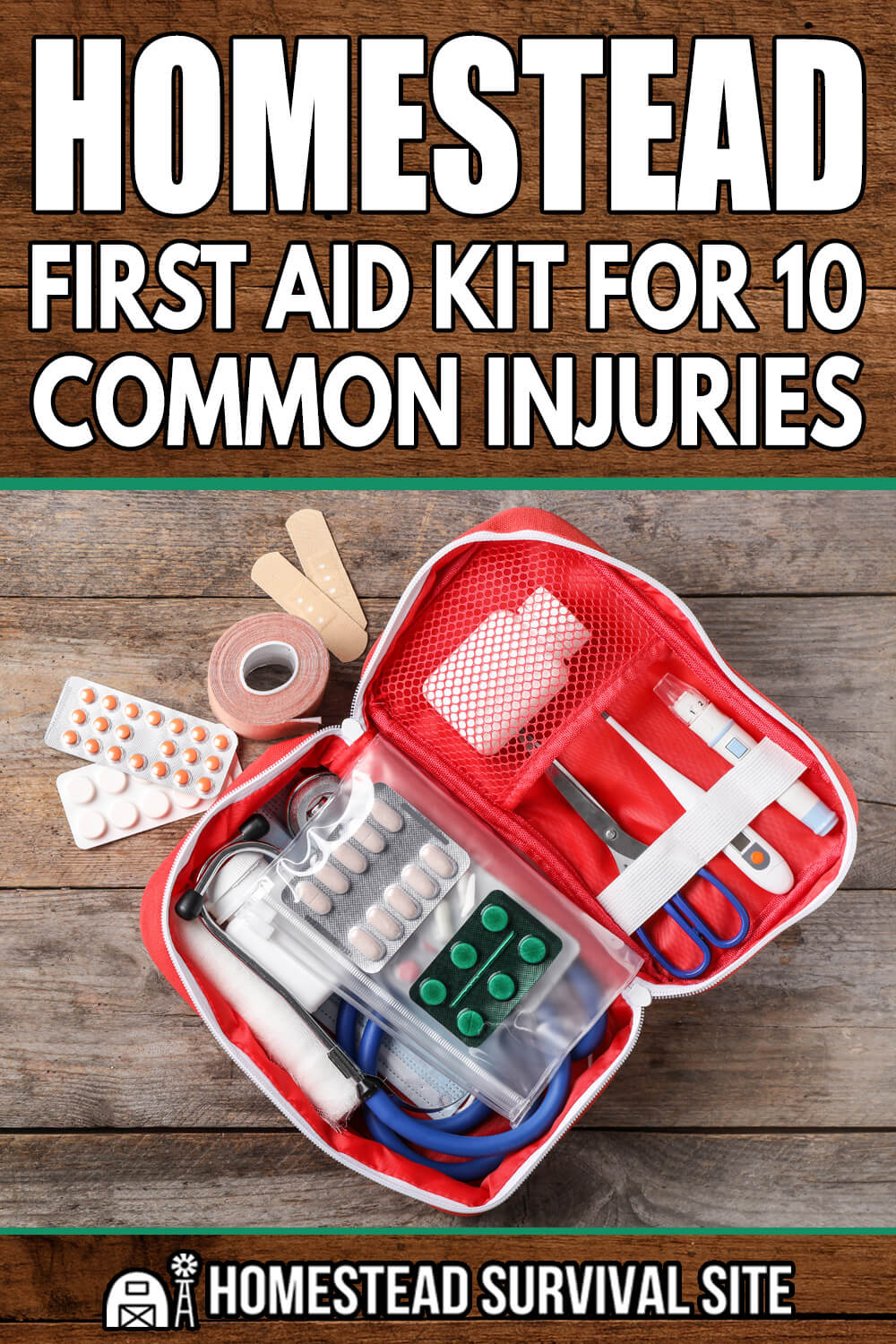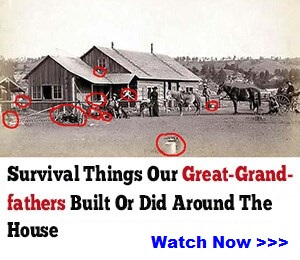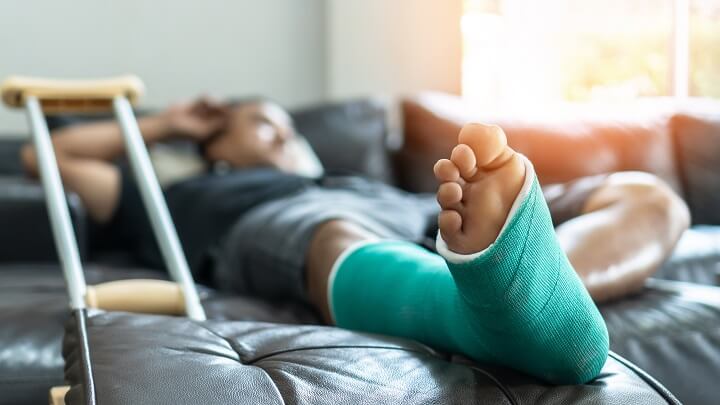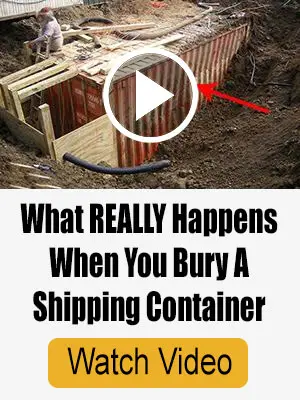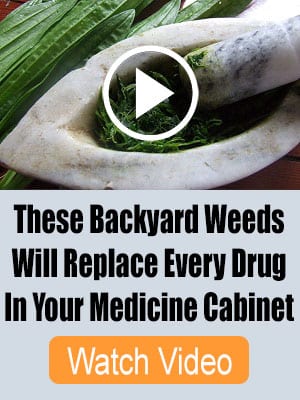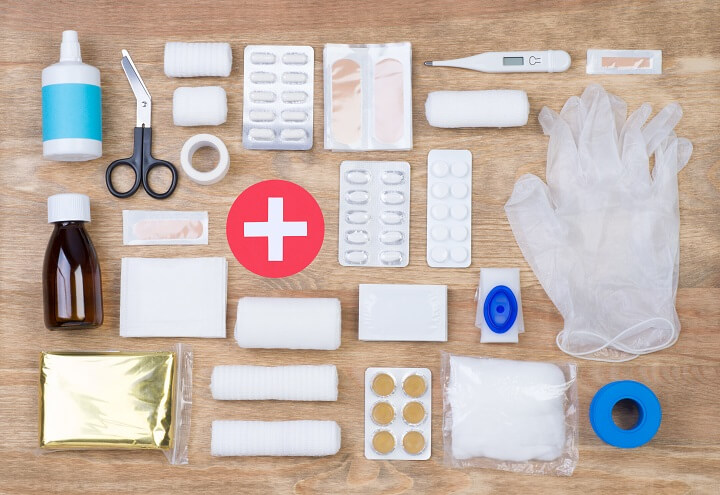[ad_1]
 Homesteading is an active, physical lifestyle, and many injuries are a fact of homesteading life.
Homesteading is an active, physical lifestyle, and many injuries are a fact of homesteading life.
Injuries are common for everyone and at some point, you’re going to require some basic first aid. But homesteading is different. Homesteaders engage in tasks and efforts on a daily basis that increase the potential for an injury or condition requiring first aid.
Want to save this post for later? Click Here to Pin It On Pinterest!
Some injuries are serious enough to require professional medical care or even a call to 911, but if you live remotely or for some reason are hesitant to seek the services of a health care provider due to a lack of medical insurance or something like a pandemic, you’re on your own.
Standard First Aid Kits Don’t Always Cut It
It’s easy enough to buy a standard first aid kit that will treat the most common injuries. They’re available in various sizes and at various price points, but with the exception of some very expensive expedition medical kits, most standard first aid kits don’t have the range of first aid items a homesteader might need.
The simplest solution is to assemble your own. You can do it from scratch or supplement a pre-packaged first aid kit with some of the items you might need for a homesteading lifestyle.
Unique First Aid Challenges for a Homestead
We’re going to cover some of the first aid challenges common to homesteaders and then a list of possible injuries, equipment, supplies, and meds for a homesteading first aid kit.
In alphabetical order, here are 10 injuries and conditions a homesteader could encounter that go beyond the everyday.
Allergies
Anyone susceptible to allergies most likely has allergy meds on hand from Benadryl to Epinephrine. This is especially true for someone with a severe allergy that can cause anaphylactic shock or difficulty breathing.
Allergy treatments can offer relief for a variety of allergic symptoms from congestion to hives. The most potent treatment is an epi-pen or Epinephrine. It’s used to treat violent allergic reactions to bee stings or certain food allergies and requires a doctor’s prescription.
Any homesteader predisposed to allergies will find that they are constantly exposed to allergens from the pollen of forests and fields to rashes caused by exposure to toxic plants. In addition to pills taken by mouth, there are topical ointments for rashes and hives.
Breaks and Sprains
Whether it’s stepping into a rut in a field, tripping over a log, or falling off a ladder, homesteaders seem to find all sorts of ways to sprain a wrist or ankle or worse, break an arm or leg.
Any broken bone should be treated by a medical professional, but sprains can usually be treated at home. The biggest problem with a sprain is that it limits our ability to work until the sprain is healed, so a first aid solution should be able to not only treat the injury but provide some added support so you can keep working if you must.
Burns
Homesteaders seem to be around fire with some frequency. Whether we’re burning brush, smoking a pig in a barrel smoker, loading and stoking a wood-burning stove, or dealing with the occasional brush fire –burns are another fact of homesteading life.
We also tend to be around boiling things like large pots of water for processing canned foods to boiling maple sap for syrup. The ability to treat first, second, and even third-degree burns is another necessity for homesteading life, although third-degree burns should be treated by a medical professional.
Cuts and Scrapes
Minor cuts and scrapes are the most common injury for any homesteader, and how many of us let the little cuts and scrapes just bleed until they form a scab?
The problem is infection either from bacteria already resident on the skin to something we encounter while that small, oozing cut continues to come in contact with dirt, dust, and anything else we come in contact with over the course of the day.
Some simple first aid makes it all better, but we have to take the time and have the materials to treat them. A few adhesive bandages and a packet of topical antibiotics in a shirt pocket first aid kit can make short work of any cut or scrape.
Deep Wounds
This isn’t about bullet wounds but deep wounds usually caused by large and sharp tools like axes, machetes, knives, blades attached to machinery, and many of the sharp or pointed edges on other tools and farm equipment that catch many of us by surprise.
Bandages can treat many wounds, but some require sutures and topical antibiotics to prevent infection in addition to other first aid supplies for deep wounds. And while any wound needs to be bandaged, a homesteader may need a “field dressing” similar to those applied to soldiers to allow them to return to combat, or at least your farm and fields.
Eye Injuries
This is another injury that’s all too common for anyone leading an active, physical lifestyle like a homesteader. Eye injuries usually catch us by surprise, whether it’s a sharp stick on a tree or wood and metal shavings flying from a chainsaw or grinder.
Protective eyewear is the common-sense way to prevent eye injuries, but how many of us wear them for a casual walk in the forest or figure we’ll make one quick cut with the chain saw and won’t need them? Eye first aid is a definite must for a homesteader and a serious eye injury will require a call to 911.
Infections
An injury that penetrates the skin from a minor cut or scrape to a deep wound or burn has the potential to develop an infection. Topical antibiotics like Neosporin are a good bet for prevention but you may need to keep an eye on the development of any red spots or streaks that appear around the wound over time.
In that event, professional medical treatment including a prescription antibiotic like Amoxicillin or Cipro is highly recommended.
Infections (Fungal)
Fungal infections develop and spread usually as a result of skin getting exposed to moisture for an extended period of time. Fungal infections are common on the feet and in folds of the skin. For many homesteaders, exposure to wet and muddy conditions occurs on a daily basis, whether it’s simply walking through the early morning dew on tall grass to slogging through the mud of a livestock feedlot.
Sweat is another constant companion for any homesteader and over time can lead to chafing or even a fungal infection. Fungal infection treatment is fairly simple and preventive treatment is best, but you need the knowledge and the items to prevent it or at least treat it.
Insect bites
Anyone who spends a significant amount of time outside is subject to a variety of insect bites that require first aid. As homesteaders, we often tend to get into the thick of it and, because many of us live in remote areas defined as wilderness, bugs are constant companions.
We’re also known for pulling things apart and all manner of nests for bees, wasps, and hornets sometimes surprise us. Then again, we encounter our share of spiders from webs in the rafters of a chicken coop to Black Widows in the brush we’re clearing from the side of the barn.
Topical treatment for insect bites should be a standard addition to a homesteading first aid kit. And speaking of Black Widows…
Venomous Bites
Think snakes and spiders. People in the city don’t encounter snakes and spiders with the same frequency as homesteaders, but all manner of activities can cause us to encounter one, from clearing a brush pile to simply walking through the woods or picking bush beans from the garden.
Any snake or spider bite should be taken seriously. Even a non-venomous snake is a wild animal and there is the potential for infection. Venomous snake bites are another story, and a snake bite kit is a good idea along with some time spent understanding how to use one before you get bit.
In most instances, you’ll want to seek professional, medical care after a venomous snake bite, but quickly treating the bite with a snake bite kit before heading to the hospital is a good idea. And even if the snake is non-venomous, the potential for rabies or other diseases caused by a wild animal bite may deserve some professional medical attention as well.
Common, venomous snakes a homesteader could encounter in North America include:
- Rattlesnakes (10 species)
- Water Moccasin or Cottonmouth
- Copperhead
- Coral Snakes (3 species)
Common, venomous spiders in North America include:
- Black Widow (32 species)
- Brown Recluse (11 species)
- Hobo spider
- Yellow Sack or Black Footed Spider
Every part of North America has at least one of these venomous snakes or spiders, so don’t dismiss the possibility, especially on a homestead.
And There’s More…
There are other conditions from dental problems to more serious medical conditions including heart attack and stroke. We’ll cover them briefly in the section below, but serious medical events are common to anybody and require professional care starting with a call to 911—although you should have a working knowledge of CPR.
Homestead First Aid Kit
This section is organized based on 4 levels of medical conditions. It identifies symptoms, equipment needed, supplies, and medications both OTC and prescription. This way, the information is provided with some context for a condition and the necessary supplies and equipment needed to treat it.
Some require professional medical care or follow up. Just as many require a call to 911 if symptoms are severe. The concept of first aid is to provide immediate treatment and then further assess the injured or ill person’s condition before calling a doctor or 911 if necessary.
Level 1 Conditions
Level 1 conditions require basic first aid.
1st-Degree Burn
Allergic Reaction (mild)
- Apparent Symptoms: Hives, itching, swelling.
- Equipment for Continuous Treatment: N/A
- Supplies for Immediate Treatment: N/A
- Meds Possibly Needed for Treatment: Benadryl, anti-itch spray.
Coughing and Congestion
- Apparent Symptoms: Sneezing and coughing.
- Equipment for Continuous Treatment: Humidifier or tea kettle.
- Supplies for Immediate Treatment: Water for steam.
- Meds Possibly Needed for Treatment: Cough medicine, VapoRub.
Eye Injuries
Fever Due to Cold or Flu
Inflamed Gums
- Apparent Symptoms: Pain and noticeable swelling along the gum line.
- Equipment for Continuous Treatment: Dental picks, toothbrush.
- Supplies for Immediate Treatment: Floss, toothpaste, mouthwash, or salt and water rinse.
- Meds Possibly Needed for Treatment: Amoxicillin or Cipro in the event of infection.
Insect Bites Including Bees, Wasps, Hornets, Fire Ants, and Non-Venomous Spiders
- Apparent Symptoms: Localized pain and swelling.
- Equipment for Continuous Treatment: Refillable ice bag.
- Supplies for Immediate Treatment: Ice for the ice bag for immediate relief.
- Meds Possibly Needed for Treatment: Topical pain relief spray, baking soda. (Epinephrine if allergic to stings.)
Shallow Cut
Sprain
Sprained or Broken Finger
- Apparent Symptoms: Pain, swelling, difficulty moving finger, redness.
- Equipment for Continuous Treatment: Finger splints.
- Supplies for Immediate Treatment: Surgical tape.
- Meds Possibly Needed for Treatment: OTC pain relievers like ibuprofen to reduce swelling.
Level 2 Conditions
Level 2 conditions require basic first aid but advanced supplies and equipment.
2nd-Degree Burns
- Apparent Symptoms: Burn through skin to muscle, oozing, redness, intense pain, shock. If symptoms severe, CALL 911.
- Equipment for Continuous Treatment: Pre-packed burn kit with enough burn gel for repeated usage over time.
- Supplies for Immediate Treatment: Burn gel used immediately, sterile gauze bandages, sterile rubber gloves, plenty of clean, cold water.
- Meds Possibly Needed for Treatment: Triple antibiotic ointment, Amoxicillin or Cipro, Prescription pain meds, OTC pain meds.
Cracked Tooth
- Apparent Symptoms: Obvious gap or missing part of tooth. Follow up with dentist.
- Equipment for Continuous Treatment: Dental medical kit.
- Supplies for Immediate Treatment: Putty or cement to repair a tooth.
- Meds Possibly Needed for Treatment: Prescription Amoxicillin or Cipro for possible infection, and prescription or OTC pain meds.
Cuts or Wounds (deep)
- Apparent Symptoms: Pain, bleeding, dark-red blood. If bleeding is profuse and continuous, CALL 911.
- Equipment for Continuous Treatment: Suture kit, sterile water-flush bottle, sterile rubber gloves.
- Supplies for Immediate Treatment: Suture thread, sterile water for immediate rinsing, butterfly bandages, large, sterile gauze pads.
- Meds Possibly Needed for Treatment: Triple antibiotic ointment, Amoxicillin or Cipro, Prescription pain meds, OTC pain meds.
Poisoning
- Apparent Symptoms: Sweating, vomiting, diarrhea, confusion, hives. CALL 911.
- Equipment for Continuous Treatment: Bucket for vomiting either natural or induced.
- Supplies for Immediate Treatment: N/A
- Meds Possibly Needed for Treatment: Activated charcoal, Ipecac to induce vomiting.
Sprained or Broken Wrist or Ankle But Not a Compound Fracture
- Apparent Symptoms: Pain, redness, distortion of the wrist or ankle, swelling. Follow up with Doctor. If symptoms severe, CALL 911.
- Equipment for Continuous Treatment: Ice bag for pain and to manage swelling.
- Supplies for Immediate Treatment: Various splints, Velcro wrist and ankle braces, surgical tape, ice pack for pain, elastic medical wraps for immediate treatment.
- Meds Possibly Needed for Treatment: Prescription pain meds, Amoxicillin or Cipro, OTC pain meds like Ibuprofen.
Level 3 Conditions (possibly call 911)
Level 3 conditions are serious and potentially life-threatening conditions that require immediate first aid and follow up with medical professionals. Possibly Call 911.
3rd-Degree Burns
Broken Shoulder, Ribs, Arm, or Broken Leg But Not a Compound Fracture
- Apparent Symptoms: Pain, distortion of the affected area, redness, swelling. Seek medical attention or If in shock or severe distress, CALL 911.
- Equipment for Continous Treatment: Elastic wraps, Velcro braces for various parts of the body, splints, reusable ice bags.
- Supplies for Immediate Treatment: Ice pack to provide immediate relief for pain and swelling.
- Meds Possibly Needed for Treatment: Prescription and OTC pain meds including ibuprofen for swelling, prescription blood thinners like Plavix to prevent blood clots.
Severe Wound from a Chainsaw, Ax, or Firearm
- Apparent Symptoms: Severe bleeding, pain. Seek medical attention. If in shock or loss of consciousness, CALL 911.
- Equipment for Continous Treatment: Sterile gauze bandages, surgical tape, elastic wraps, reusable ice bags for long-term relief of pain and swelling, suture needles.
- Supplies for Immediate Treatment: Sterile towels, sterile gauze, sterile rubber gloves, surgical tape, elastic wraps, suture threads, ice packs for some immediate relief of pain and swelling.
- Meds Possibly Needed for Treatment: Prescription and OTC pain meds including ibuprofen to relieve inflammation, Amoxicillin or Cipro, triple antibiotic ointment.
Venomous Bite From Snake or Spider
- Apparent Symptoms: Redness, swelling, festering wound, puncture marks. Seek medical attention. If in shock or severe distress, CALL 911.
- Equipment for Continous Treatment: Elastic wraps to wrap wounded area in ice, sterile gauze bandages.
- Supplies for Immediate Treatment: Snakebite kit to be used immediately, ice pack to slow the spread of venom.
- Meds Possibly Needed for Treatment: Anti-venom? OTC pain meds like ibuprofen for swelling, Amoxicillin, or Cipro. Triple antibiotic ointment.
Level 4 Conditions (always call 911)
Level 4 conditions are life-threatening and require medical professionals or prompt and knowledgeable treatment and follow up. Always Call 911.
3rd-Degree Burns With Wide Coverage of the Body
Compound Fracture
- Apparent Symptoms: Intense pain, bone protruding from wounded area, heavy bleeding. CALL 911.
- Equipment for Continous Treatment: Bandages, elastic wrap, tourniquet, splints.
- Supplies for Immediate Treatment: Sterile towels, sterile water, additional bandages, sterile rubber gloves.
- Meds Possibly Needed for Treatment: Amoxicillin or Cipro, prescription pain meds, triple antibiotic ointment.
Heart Attack or Stroke
- Apparent Symptoms: It’s best to do extensive research on these critical conditions. CALL 911.
- Equipment for Continous Treatment: CALL 911.
- Supplies for Immediate Treatment: CALL 911.
- Meds Possibly Needed for Treatment: Nitroglycerin prescription.
Homestead First Aid Kit Checklist
Below is a list of all the first aid items mentioned in this article. There is no guarantee that the list below includes everything you need to treat every possible injury. However, with the following items, you should be able to treat 99% of injuries that occur on a homestead.
[ad_2]
Source link
Get more stuff like this
in your inbox
Don't Be Left Unprepared
Thank you for subscribing.
Something went wrong.

